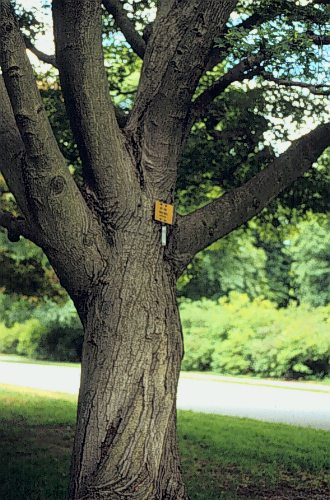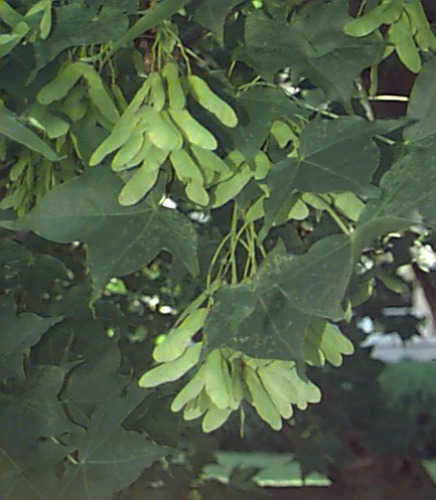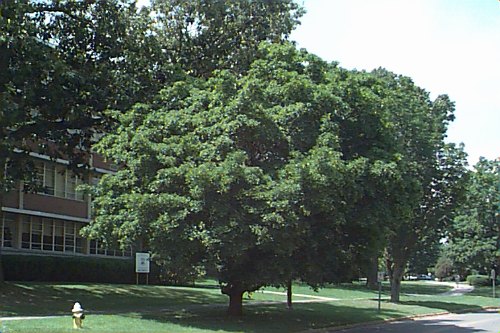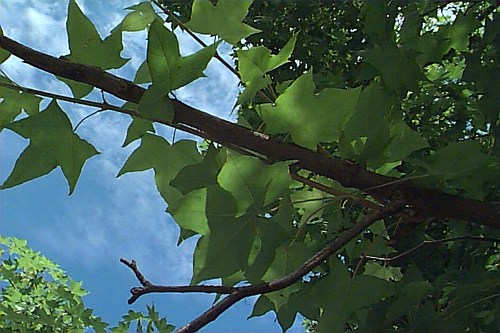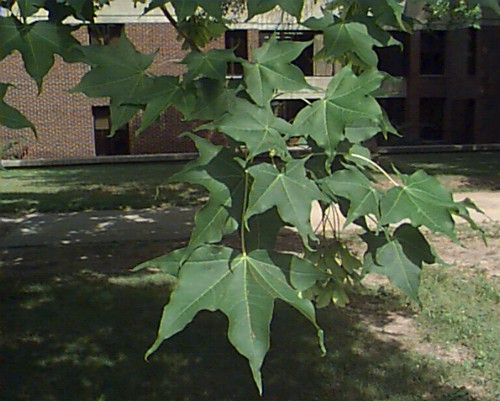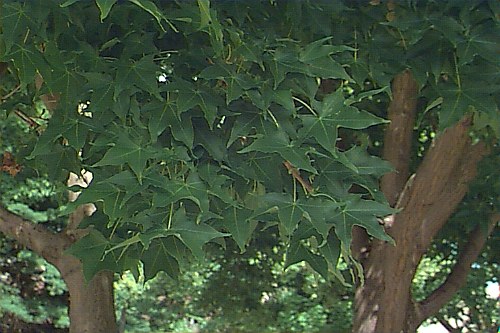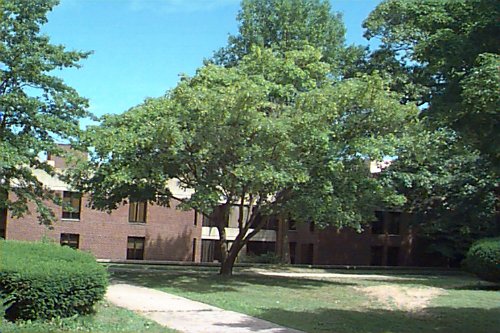Acer truncatum
Purpleblow Maple, Shantung Maple
Aceraceae
ExpandHabitat
- native to China, Manchuria and Korea
- zone 4
Habit and Form
- deciduous
- a small tree, 20' to 25' tall
- rounded, broad crown with regular branching
- texture is medium
Summer Foliage
- opposite, 3" to 5" wide and not as long
- 5-lobed, lobes triangular, two basal lobes drawn out and narrow, lobes untoothed
- 2 spurs on the basal lobes point to petiole base
- milky sap
- on first inspection may be confused with Acer platanoides
- glossy green, good quality in summer; may emerge reddish
Autumn Foliage
- usually yellow and orange with some red
Flowers
- greenish yellow in May
Fruit
- samaras, 1.25" to 1.5" long
Bark
- gray brown on older branches and trunk
- twigs may have purplish cast
Culture
- apparently adaptable and hardy, but uncommon, so data is limited
- have observed trees growing well that were in compacted, dry soils
- full sun provides for best landscape development
Landscape Uses
- good for small residences as shade tree
Liabilities
- seems to be relatively problem free based on limited data
- tar spot has been observed
ID Features
- milky foliage sap
- unique leaf shape
Propagation
- by seed, but seed viability in the U.S. may be low
- can also root stem cuttings of young plants
Cultivars/Varieties
subsp. mono - Known as the Painted Maple, this plant is similar to A. truncatum, but could be described as more refined. Has more ornamental bark and "boxier" leaves. Vase-shaped with a dome-like canopy.
